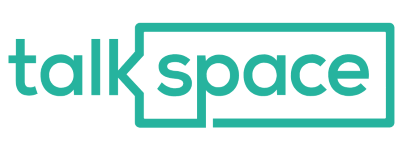Table of Contents
The Handbook team knows that therapist fees, prescription medications, and secondary costs— like transportation and childcare—can make it hard to get the mental health care you need. A recent study by Mental Health America shows that 42 percent of Americans with a mental illness who did not receive treatment said that cost was the reason.
Online therapy platforms offer one avenue for users to access care and compare costs. To find the most affordable options, we researched 70 online therapy sites and personally tested 14, many of which are platforms that accept insurance. Learn about our top five picks for the best affordable online therapy platforms in this review.
Our pick for the best affordable online therapy platform overall
BetterHelp is our top pick for the best affordable online therapy platform—and it’s also the most popular platform among our October 2023 online therapy survey respondents. On BetterHelp, adults, teens, and couples can meet with a therapist for $70–$100 per week. BetterHelp also offers users the option to apply for financial aid.
Our picks for the best affordable online therapy platforms
- BetterHelp: Best overall
- Brightside: Best for using insurance
- Online-Therapy: Best for couples
- Talkspace: Best text therapy option
- Talkiatry: Best for psychiatry and medication management
In a mental health emergency
Online psychiatrists may not be the most appropriate resource to help in a mental health crisis. If you or someone you know is a danger to themselves or others around them, it is an emergency, and cannot wait for an online therapist’s response.
Don’t wait. You can find help immediately by:
- Visiting urgent care
- Calling or texting 988 for the Suicide & Crisis Lifeline
- Chatting online at 988lifeline.org
- Calling the Substance Abuse and Mental Health Services Administration (SAMHSA)’s Helpline at 1-800-662-4357 or text your zip code to 435748
All the above options will connect you with trained professionals who can provide crisis support. You can find even more resources, including international options, on our helpline directory page.
Our testing experience






The Handbook Team researched more than 70 online therapy platforms, directories, and networks. Based on our research, we signed up for the top 14 platforms to test for ourselves. Here’s what we did with each online therapy platform:
Testers explored the platforms and attended online therapy sessions for at least four weeks. Our testers were instructed to test the platforms through the lens of a real user, paying attention to how easy or difficult it was to find a therapist they could talk to. Testers logged their experience in a diary and came together to share their findings when testing concluded.
We learned that most testers felt the need to switch providers, especially the ones testing platforms that initially matched users to their providers. Our challenge was to test and evaluate the features and experience of the platforms themselves rather than the care from individual providers. We were surprised when we encountered the lack of choice in providers on some platforms. For example, when our Calmerry tester was looking for a provider of color in their state, they were given three choices, none of whom matched our tester’s preferences.
From our tester
“I was only given three [therapist] options and still couldn’t get the type of therapist I was looking for. When I didn’t find the therapist I was looking for, I felt unseen and underrepresented. Often, I’m reminded that I am a minority due to the lack of representation of someone who looks like me. This was just another example of that.”
Still, we were pleased that most of our testers had positive interactions with the providers they chose. “I’ve been through many therapists before, but I was surprised when I found a therapist who specialized in my concerns and had a different approach to therapy,” said one tester. “I learned a new perspective to frame my ongoing concerns and got to connect with a caring provider that I felt comfortable with.”
We rated the online therapy platforms in this review based on the findings from our testing.
Compare the best affordable online therapy platforms of 2024
| Platform | Services | Ways to Connect | Monthly Cost for Individual Therapy | Takes Insurance? | Visit Site |
|---|---|---|---|---|---|
| Individual therapy | Messaging; Text, audio, or video sessions | $280–$400 | No | Visit Site | |
| Individual therapy; Psychiatry | Messaging; Video sessions | $299–$349* | Yes | Visit Site | |
| Individual and couples therapy | Messaging; Text, audio, or video sessions | $200–$440 | No | Visit Site | |
| Individual, couples, and teen therapy; Psychiatry | Messaging; Text, audio, or video sessions | $276–$436* | Yes | Visit Site | |
| Psychiatry | Messaging; Video sessions | Varies by insurance provider** | Yes | Visit Site |
* Or less, if you’re paying with insurance.
** Talkiatry is in-network insurance only.
The best affordable online therapy reviews
BetterHelp: Best overall
Brightside: Best for using insurance
Online-Therapy.com: Best for couples
Talkspace: Best text therapy
Talkiatry: Best for psychiatry and medication management
Other platforms to consider
Inclusive Therapists: Best for People of Color
Inclusive Therapists is an online marketplace that makes it easy to find providers who meet your needs and preferences—including therapists who share one or more aspects of your identity. You can search for providers based on numerous factors, including cultural knowledge, languages, gender identity, ethnic and racial identity, sexual orientation, spiritual knowledge/faith, therapeutic approach, specialties, and more. Examples of filter options include Biracial/Multiracial; Person Living with Disability or Living with Chronic Pain/Illness; Gender Nonbinary, Non-Conforming, Queer, Expansive, or Agender; and Jewish Diaspora.
You can also search by insurance provider. Once you’ve shared your preferences and location, you’ll receive a spreadsheet via email with provider names and contact information. You may also receive emails directly from therapists who share their availability.
Many of the providers on this platform take insurance or have sliding scale fees.
Charlie Health: Best for Teens
Charlie Health provides personalized mental health care for teens and young adults. Their primary offering is intensive outpatient care, which is intended for those who need more than weekly support from a therapist. Clinical mental health providers at Charlie Health offer a variety of evidence-based approaches, including art therapy, drama therapy, and cognitive behavioral therapy. We like that Charlie Health accepts many large insurance carriers, including Medicaid.
Handbook Tip #1
We talked to therapist Colleen Marshall, LMFT and Vice President of Two Chairs, to help Handbook readers learn ways to make therapy more affordable. Here are her tips:
- If you have health insurance, call your insurance carrier and ask about your mental health benefits. Specifically, find out the amount of your copays for therapy and psychiatry, as this is what you’ll pay out-of-pocket for each session. If you have mental health benefits, access your therapy through those benefits by finding an in-network provider.
- If you’re paying out of pocket, determine how much you can afford to pay for a therapist within your budget and then look for one within that range. Ask providers if they offer sliding scale fees or tiered payment options.
- Research low-fee clinics or community mental health agencies in your region by calling 211 or contacting your region’s Department of Health and Human Services.
- Consider virtual therapy options, which reduce costs by eliminating transportation and childcare costs.
Frequently asked questions
Online therapy costs vary by platform and provider. Some of the platforms we reviewed offer services for as little as $65 per session without insurance. With insurance, you can see a provider for the cost of your copay, which could be as low as $30 or less.
Online therapy platform costs may be lower than in-person therapy costs, which are typically about $100–$200 per session. This will depend on the platform you choose, if you are using insurance, and your location.
Many online therapy platforms take insurance, including Brightside, Talkspace, and Talkiatry.
Online therapy can be a good option if you are seeking treatment for certain mental health conditions and are comfortable attending sessions from home. If you prefer the intimacy of an in-person setting, or if you don’t have privacy at home, online therapy may not be ideal.
If you’re having a mental health crisis, don’t use online therapy. Call 988 or 911 and get help now.
Only psychiatrists can prescribe medication and most psychiatrists available through online platforms can prescribe medications as part of your treatment plan, but controlled substances like Ritalin and Xanax may not be available through your online provider.
- Reinert, M., Jr., Fritze, D., Nguyen, T. (October 2022). The state of mental health in America 2023 [Report]. Mental Health America. Link
- Hilty, D. M., Ferrer, D. C., Parish, M. B., Johnston, B., Callahan, E. J., & Yellowlees, P. M. (2013). The effectiveness of telemental health: A 2013 review. Telemedicine Journal and E-health, 19(6), 444–454. Link
- Stubbe, D. (2018). The therapeutic alliance: the fundamental element of psychotherapy. Focus, 16(4), 402–403. Link
- Rapfogel, N. (2022, May 26). The behavioral health care affordability problem. Center for American Progress. Link
- Kamenov, K., Twomey, C., Cabello, M., Prina, A.M., & Ayuso-Mateos, J. L. (2016). The efficacy of psychotherapy, pharmacotherapy and their combination on functioning and quality of life in depression: A meta-analysis. Psychological Medicine, 47(3), 414–425. Link
- Lebow, J., & Snyder, D. K. (2022). Couple therapy in the 2020s: Current status and emerging developments. Family Process, 61(4), 1359–1385. Link
- Hull, T. D., Malgaroli, M., Connolly, P.S., Feuerstein, S., & Simon, N. M. (2020). Two-way messaging therapy for depression and anxiety: Longitudinal response trajectories. BMC Psychiatry, 20(1). Link









